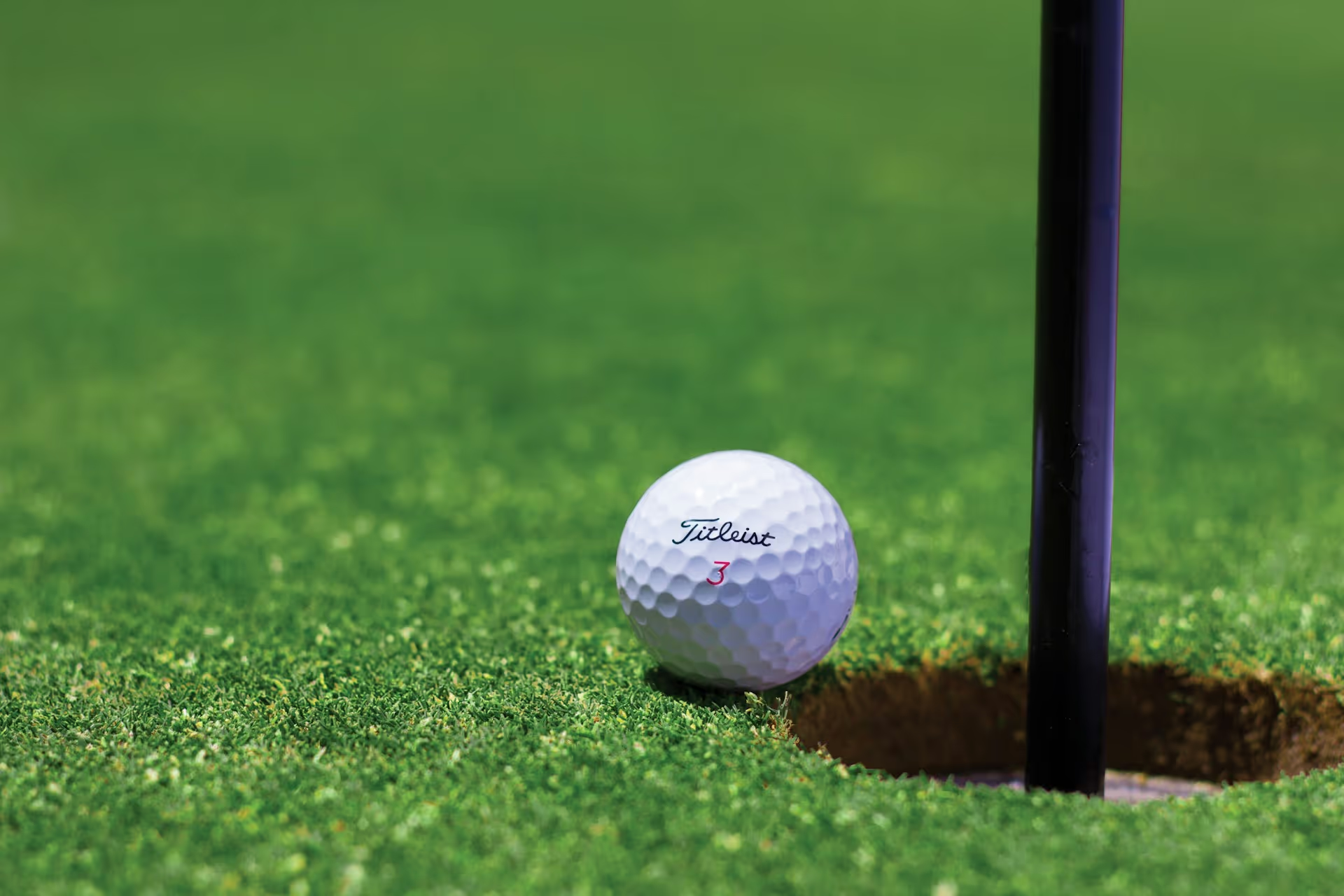The line of flight is the entire path your golf ball takes through the air, from the moment it leaves the clubface until it comes to rest on the ground. Understanding what creates this flight path - the starting point, the trajectory height, and the curvature - is essential for hitting more consistent shots and playing better on the course.
Getting the Basics Right: Target Line vs. Line of Flight
Before we go any further, it's important to clarify a common point of confusion: the difference between your target line and your ball's line of flight. They are almost never the same thing, and that's perfectly okay.
- The Target Line: This is the perfectly straight, imaginary line connecting your golf ball directly to your target. Think of it as the mission objective - the ideal path if factors like spin and gravity didn't exist.
- The Line of Flight: This is what actually happens. It's the real, three-dimensional arc the ball travels through the air. Even for the shortest of putts, the ball typically travels in an arc rather than a perfectly straight line, due to factors like terrain and spin.
Think of the target line as the plan, while the line of flight represents reality. To hit very straight shots, you need to account for this reality by adapting your swing and clubface alignment. For example, if you aim left of the flag, you must account for your typical shot shape, such as a fade, to bring the ball onto the intended line.
The Three Big Factors That Shape Your Line of Flight
A good ball flight is not a simple accident, it's the result of three main factors interacting together at the moment the clubface impacts the ball:
1. Starting Line: Where the Ball Begins Its Journey
The path of your swing initiates the ball's journey. For drivers, around 85% of the ball's initial direction is determined by the angle of the clubface at impact. For irons, this is similar but slightly less pronounced at around 75%.
If the clubface points directly at the target at impact, the ball will start straight toward it. If the face is ‘open’ (pointing right for a right-handed golfer), the ball will start right. A ‘closed’ face (pointing left) means the ball will start left.
A Quick Drill to Master Your Starting Line
The "Gate Drill" is a fantastic way to get a feel for your clubface control.
- Set up two tees just wider than your clubhead.
- Position a ball in between these tees.
- Swing through the "gate" cleanly to avoid knocking the tees.
- Knocking the right tee indicates an inside-out path, hitting the left tee indicates an outside-in path. Aim to send the ball through the middle of the tees for proper alignment.
2. The Curve of the Flight: Slicing or Hooking the Ball
The curvature of the ball is dictated by the relationship between the swing path and the angle of the clubface. This is often referred to as the D-Plane concept.
- For a Big Slice (Right-Handed): This common error occurs when the swing path is outside-in and the clubface is open, causing a left-to-right spinning flight.
- To Make a Draw (Right-Handed): To hit a draw, the swing path should be inside-out while the clubface is slightly closed, causing a right-to-left ball flight.
Using alignment sticks on the course can aid in visualizing your desired path and ensuring correct swing direction, helping you achieve a consistent draw or fade with practice.
3. Trajectory: Going High, Going Low
The trajectory of your golf ball - whether it goes high or low - is influenced by several factors, such as swing speed and clubface angle. Adjustments can control the ball's flight height effectively.
Dynamic Loft
The dynamic loft at impact is crucial. When playing with irons, adjust the shaft lean to control the trajectory. Forward shaft lean can lower the ball flight, while a more upright position can increase height.
Adjusting Your Height in Your Flight Path: Step-by-Step
- To hit high: Position the ball forward in your stance. This allows the club to meet the ball on an upward swing arc.
- To hit low shots: Position the ball back in your stance. This promotes a downward strike, creating a lower ball flight.
How Understanding Lines of Flight Helps in Making Better Choices on the Course
When Playing for Dog-leg Holes
On dog-leg holes, aim to the side that corresponds with the curve you typically play. For a right-handed golfer, aim left to let your fade bring the ball back to the fairway's center.
Having Stock Shots
Developing reliable stock shots, like a consistent fade or draw, allows you to manage the course more effectively. A good stock shot helps ensure predictability in your play.
Final Thoughts
The better you understand your ball's line of flight, the more control you'll have over your game. Mastery of your ball's flight path puts you in command, making you a consistent and confident golfer.
I invite you to try Caddie AI. We provide instant advice from club choice to strategy planning, helping golfers at all levels improve their game.









